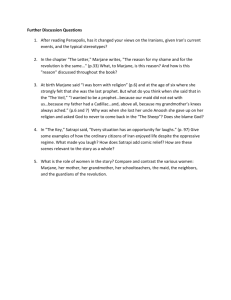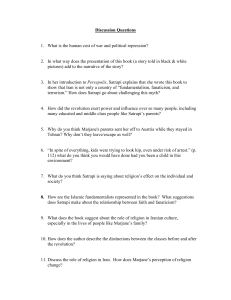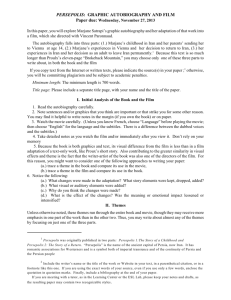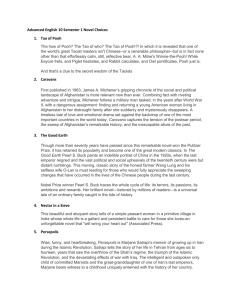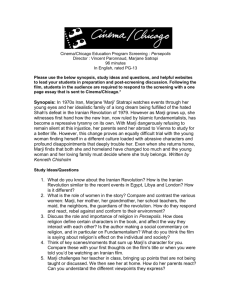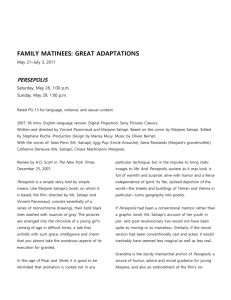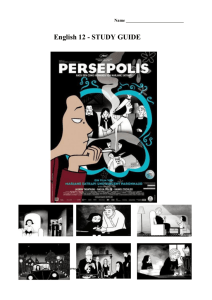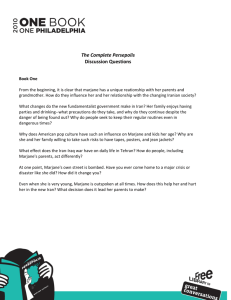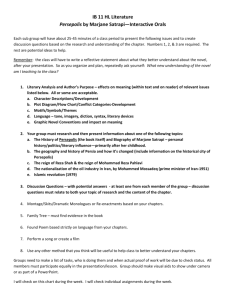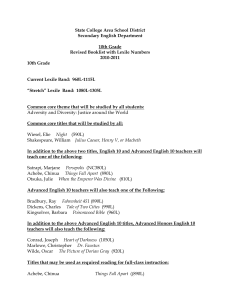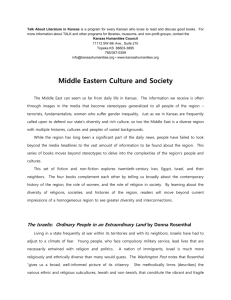Film Assignment 05 Persepolis
advertisement
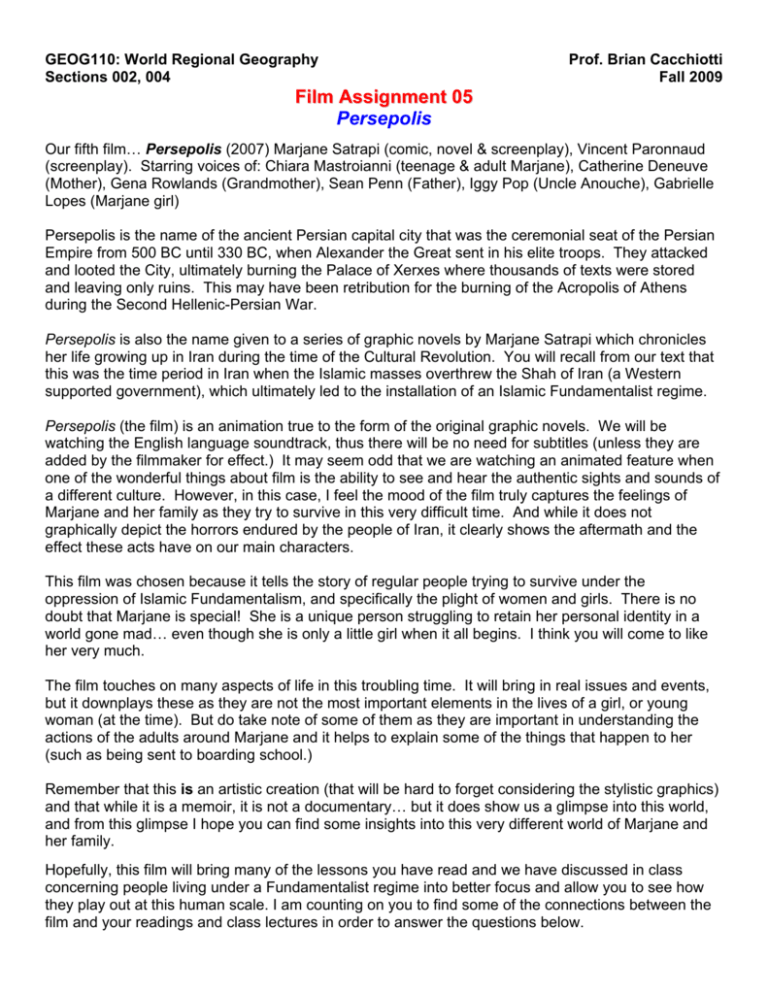
GEOG110: World Regional Geography Sections 002, 004 Prof. Brian Cacchiotti Fall 2009 Film Assignment 05 Persepolis Our fifth film… Persepolis (2007) Marjane Satrapi (comic, novel & screenplay), Vincent Paronnaud (screenplay). Starring voices of: Chiara Mastroianni (teenage & adult Marjane), Catherine Deneuve (Mother), Gena Rowlands (Grandmother), Sean Penn (Father), Iggy Pop (Uncle Anouche), Gabrielle Lopes (Marjane girl) Persepolis is the name of the ancient Persian capital city that was the ceremonial seat of the Persian Empire from 500 BC until 330 BC, when Alexander the Great sent in his elite troops. They attacked and looted the City, ultimately burning the Palace of Xerxes where thousands of texts were stored and leaving only ruins. This may have been retribution for the burning of the Acropolis of Athens during the Second Hellenic-Persian War. Persepolis is also the name given to a series of graphic novels by Marjane Satrapi which chronicles her life growing up in Iran during the time of the Cultural Revolution. You will recall from our text that this was the time period in Iran when the Islamic masses overthrew the Shah of Iran (a Western supported government), which ultimately led to the installation of an Islamic Fundamentalist regime. Persepolis (the film) is an animation true to the form of the original graphic novels. We will be watching the English language soundtrack, thus there will be no need for subtitles (unless they are added by the filmmaker for effect.) It may seem odd that we are watching an animated feature when one of the wonderful things about film is the ability to see and hear the authentic sights and sounds of a different culture. However, in this case, I feel the mood of the film truly captures the feelings of Marjane and her family as they try to survive in this very difficult time. And while it does not graphically depict the horrors endured by the people of Iran, it clearly shows the aftermath and the effect these acts have on our main characters. This film was chosen because it tells the story of regular people trying to survive under the oppression of Islamic Fundamentalism, and specifically the plight of women and girls. There is no doubt that Marjane is special! She is a unique person struggling to retain her personal identity in a world gone mad… even though she is only a little girl when it all begins. I think you will come to like her very much. The film touches on many aspects of life in this troubling time. It will bring in real issues and events, but it downplays these as they are not the most important elements in the lives of a girl, or young woman (at the time). But do take note of some of them as they are important in understanding the actions of the adults around Marjane and it helps to explain some of the things that happen to her (such as being sent to boarding school.) Remember that this is an artistic creation (that will be hard to forget considering the stylistic graphics) and that while it is a memoir, it is not a documentary… but it does show us a glimpse into this world, and from this glimpse I hope you can find some insights into this very different world of Marjane and her family. Hopefully, this film will bring many of the lessons you have read and we have discussed in class concerning people living under a Fundamentalist regime into better focus and allow you to see how they play out at this human scale. I am counting on you to find some of the connections between the film and your readings and class lectures in order to answer the questions below. The Assignment: You should watch the film in class, or see it in the library or consequently you might rent it and watch in private (or to see it again.) You should be watching it, not for entertainment purposes (although I do hope you enjoy it), but for signs of Iranian (and perhaps Middle Eastern) culture. You will write a 1 full page response (or about 3 - 4 paragraphs) where you will address the following questions. Response: After watching the film, you are required to write a response to this question: Persepolis paints an unforgettable portrait of daily life in Iran: the bewildering contradictions between home life and public life and the toll that repressive regimes exact on the individual spirit. Satrapi’s child’s-eye-view of dethroned emperors, statesanctioned whippings and executions, and heroes of the revolution allows us to learn as she does the history of this fascinating country and of her own extraordinary family. Life for Marjane’s family is changed forever after the Fall of the Shah and the installation of an Islamic Fundamentalist Regime. • • • • What are some of the changes that the family had to undergo? How did the different members of the family respond to these changes? Were they different for the men and the women? Compare and contrast the various women: o Marjane o Her mother o Her grandmother o Her school teachers o Her neighbors (family ‘friends’) o The Guardians of the Revolution (ladies in the streets) You will submit a printed copy (with Name and Assignment Title) to me DUE in class on Tuesday, November 10, 2009 Some links of interest: Wikipedia: http://en.wikipedia.org/wiki/Persepolis_(film) The Internet Movie Database: http://www.imdb.com/title/tt0808417/ Interview with Marjane Satrapi: http://www.literalmagazine.com/pdf/l13.pdf#page=46 New York Times Movie Review: http://www.nytimes.com/2007/01/21/movies/21hohe.html
